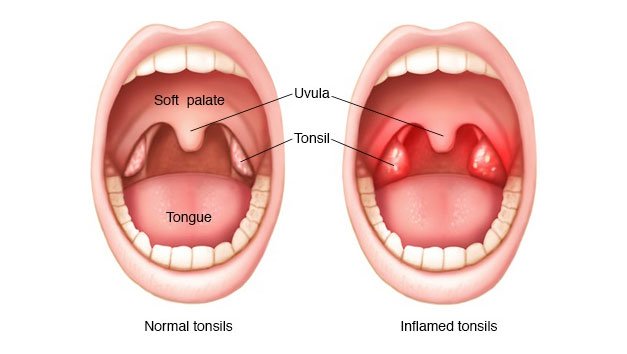
The tonsils are two clusters of tissue located on both sides of the back of the throat. Adenoids sit high in the throat behind the nose and the roof of the mouth. Tonsils and adenoids are often removed when they become enlarged and block the upper airway, leading to breathing difficulty. Snoring is the most common reason for which a tonsillectomy is performed.
The procedure to remove the tonsils is called a tonsillectomy; excision of the adenoids is an adenoidectomy. Both procedures are often performed at the same time; hence the surgery is known as a tonsillectomy and adenoidectomy, or T&A.
T&A is an outpatient surgical procedure lasting between 20 and 30 minutes and performed under general anesthesia. Normally, the young patient will remain at the hospital or clinic for several hours after surgery for observation. Children with severe obstructive sleep apnea and very young children are usually admitted overnight to the hospital for close monitoring of respiratory status. An overnight stay may also be required if there are complications such as excessive bleeding,severe vomiting, or low oxygen saturation.
Most children take seven to ten days to recover from the surgery. Some may recover more quickly; others can take up to two weeks for a full recovery.
Drinking: The most important requirement for recovery is for the patient to drink plenty of fluids..Starting immediately after surgery, children may have fluids such as water or apple juice. Some patients experience nausea and vomiting after the surgery. This usually occurs within the first 24 hours and resolves on its own after the effects of anesthesia wear off. Contact your physician if there are signs of dehydration (urination less than 2-3 times a day or crying without tears).
Eating: Generally, there are no food restrictions after surgery, but some physicians will recommend a soft diet during the recovery period. The sooner the child eats and chews, the quicker the recovery. Tonsillectomy patients may be reluctant to eat because of throat pain; consequently, some weight loss may occur, which is gained back after a normal diet is resumed.
Fever: A low-grade fever may be observed the night of the surgery and for a day or two afterward. Contact your physician if the fever is greater than 102º.
Activity: Activity may be increased slowly, with a return to school after normal eating and drinking resumes, pain medication is no longer required, and the child sleeps through the night. Travel on airplanes or far away from a medical facility is not recommended for two weeks following surgery.
Breathing: The parent may notice snoring and mouth breathing due to swelling in the throat. Breathing should return to normal when swelling subsides, 10-14 days after surgery.
Scabs: A scab will form where the tonsils and adenoids were removed. These scabs are thick, white, and cause bad breath. This is normal. Most scabs fall off in small pieces five to ten days after surgery.
Bleeding: With the exception of small specks of blood from the nose or in the saliva, bright red blood should not be seen. If such bleeding occurs, contact your physician immediately or take your child to the emergency room.
Pain: Nearly all children undergoing a tonsillectomy/adenoidectomy will have mild to severe pain in the throat after surgery. Some may complain of an earache (so called referred pain) and a few may have pain in the jaw and neck .
Pain control: The physicians at Michigan ENT & Allergy will prescribe pain medication for the young patient such as acetaminophen or acetaminophen with hydrocodone. The pain medication will be in a liquid form. Pain medication should be given as prescribed. Contact your physician if side effects are suspected or if pain is not well-controlled. If you are troubled about any phase of your child’s recovery, contact your physician immediately.
